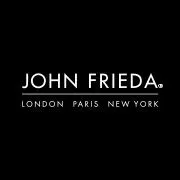
John Frieda
Learn more about our scoring →
About John Frieda
John Frieda represents a mainstream haircare brand specializing in salon-inspired treatments that address frizz, volume, and color preservation through accessible formulations. Founded in 1988, the brand has established itself as a trusted name in the mass-market haircare category, with widespread retail availability across major drugstore and beauty retailers.
The brand's sustainability performance is significantly influenced by its parent company Kao, which has implemented comprehensive environmental and social responsibility programs. Kao's science-based climate targets, RE100 membership, and TNFD-aligned biodiversity reporting provide John Frieda with robust environmental credentials, particularly in climate action and supply chain transparency. However, the brand faces notable limitations in animal welfare, as Kao's policy of conducting animal testing when legally required disqualifies John Frieda from cruelty-free certification.
Within the competitive haircare landscape, John Frieda demonstrates strong performance in ingredient safety disclosure and chemical management, supported by Kao's responsible chemicals framework. The brand's commitment to transparency extends to clear ingredient labeling and substantiated marketing claims, though packaging innovation remains an area for development compared to the comprehensive sustainability initiatives seen in climate and biodiversity protection.
The Good Stuff
Where John Frieda appears to be making meaningful progress. We cross-referenced these findings with multiple independent sources.
Science-Based Climate Leadership
Backed by parent company Kao's SBTi-approved climate targets, including net-zero commitment by 2040 and carbon-negative goals by 2050, supported by RE100 renewable energy membership
Comprehensive Supply Chain Traceability
Established traceability programs for key ingredients like palm oil, with TNFD-aligned biodiversity reporting and sustainable procurement practices throughout the supply chain
Transparent Ingredient Safety Standards
Clear disclosure of ingredient safety protocols including phthalate avoidance and responsible chemicals management policies with transparent formulation practices
The Reality Check
Areas where the publicly available data gets murky, incomplete, or concerning. We're transparent about the limitations of our analysis.
Cruelty-Free Status Limitations
Parent company Kao continues animal testing when required by law for non-cosmetic materials, disqualifying the brand from cruelty-free certification despite cosmetic-only operations
Limited Vegan Product Range
Only select products like Frizz Ease serum are marketed as vegan-friendly, with no comprehensive vegan range or brand-wide vegan commitment disclosed
Packaging Innovation Gaps
While some products feature 45% recycled plastic content, the brand lacks comprehensive packaging goals for recycled content, refillable systems, or circular design principles
John Frieda's
Impact Aura
A visual representation of John Frieda's positive impact
across People, Planet and Animals
Each colored area represents the brand's performance in that sustainability category. The size and intensity of each blob corresponds to their score—larger, more vibrant areas indicate stronger performance.
Our Research
Key findings from our comprehensive analysis of John Frieda's sustainability performance across People, Planet & Animals impact.
Positive Impact on People
Research Highlights
- Ingredient safety protocols include disclosed avoidance of phthalates and adherence to elevated safety standards
- Parent company Kao implements comprehensive human rights risk assessments and grievance mechanisms across operations
- Supply chain traceability programs established for palm oil sourcing with public reporting and transparency commitments
- Community support initiatives include smallholder development programs and diversity, equity, and inclusion policies
- Marketing integrity demonstrates transparent ingredient disclosure and commitment to substantiated claims
Evidence Strength
Strong parent company documentation for labor practices and supply chain oversight, moderate brand-level ingredient safety disclosure
Positive Impact on Planet
Research Highlights
- Science-based climate targets approved by SBTi with net-zero commitment by 2040 and carbon-negative goals by 2050
- Renewable energy leadership through RE100 membership and comprehensive decarbonization strategies
- Biodiversity protection through TNFD-aligned risk analysis and conservation programs for smallholder communities
- Water stewardship recognized with four consecutive years of CDP 'A List' water security leadership status
- Chemical responsibility policies published with responsible chemicals management framework and phthalate-free formulations
Evidence Strength
Excellent climate and biodiversity documentation with third-party verification, strong water management reporting
Positive Impact on Animals
Research Highlights
- Animal testing practices continue when required by law for non-cosmetic materials, preventing cruelty-free certification
- Limited vegan product range with select items like Frizz Ease serum available as vegan-friendly options
- Wildlife conservation efforts focus on biodiversity analysis and smallholder sustainability programs
- Sustainable sourcing initiatives document palm oil traceability and responsible procurement practices
- Conservation support through biodiversity risk assessments but lacks dedicated wildlife protection partnerships
Evidence Strength
Clear documentation of animal testing policies and vegan product limitations, transparent reporting on conservation gaps
See the Receipts
We don't just make claims—here are the official certifications that prove John Frieda's sustainability commitments.
Frequently Asked Questions
Is John Frieda sustainable?
John Frieda demonstrates strong sustainability performance through its parent company Kao's comprehensive environmental initiatives. The brand benefits from science-based climate targets, RE100 renewable energy membership, and TNFD-aligned biodiversity reporting. However, sustainability performance varies across categories, with particular strength in climate action and supply chain transparency, while facing limitations in animal welfare and packaging innovation.
Is John Frieda cruelty-free?
John Frieda is not considered cruelty-free due to parent company Kao's policy of conducting animal testing when required by law for non-cosmetic materials. Independent verification confirms this disqualifies the brand from cruelty-free certification, despite the brand's focus on cosmetic products.
Does John Frieda use clean ingredients?
John Frieda maintains ingredient safety standards including disclosed avoidance of phthalates and adherence to responsible chemicals management policies. The brand provides transparent ingredient disclosure and commits to substantiated safety claims, supported by Kao's comprehensive chemical responsibility framework.
What sustainability initiatives does John Frieda's parent company support?
Parent company Kao has implemented extensive sustainability programs including SBTi-approved climate targets, net-zero commitment by 2040, RE100 renewable energy membership, and comprehensive human rights risk assessments. The company also maintains CDP 'A List' water security status and publishes TNFD-aligned biodiversity reporting.
Are John Frieda products vegan?
John Frieda offers limited vegan options, with select products like Frizz Ease serum marketed as vegan-friendly. However, the brand lacks comprehensive vegan certification or commitment to a fully vegan product range across all formulations.
How does John Frieda address climate change?
Through parent company Kao, John Frieda benefits from science-based climate targets approved by SBTi, including ambitious net-zero goals by 2040 and carbon-negative objectives by 2050. The company's RE100 membership demonstrates commitment to renewable energy across operations.
What is John Frieda doing for supply chain transparency?
John Frieda maintains supply chain traceability programs for key ingredients like palm oil, supported by Kao's sustainable procurement practices and public reporting commitments. The brand's approach includes TNFD-aligned biodiversity risk analysis and smallholder development programs.
Ready to Shop John Frieda?
Find John Frieda products through our trusted retail partners
The Bottom Line
John Frieda demonstrates strong environmental performance through parent company Kao's comprehensive climate action and biodiversity initiatives, while facing significant limitations in animal welfare that prevent cruelty-free certification. The brand's sustainability strength lies in climate leadership and supply chain transparency, with opportunities for advancement in packaging innovation and vegan product development.


